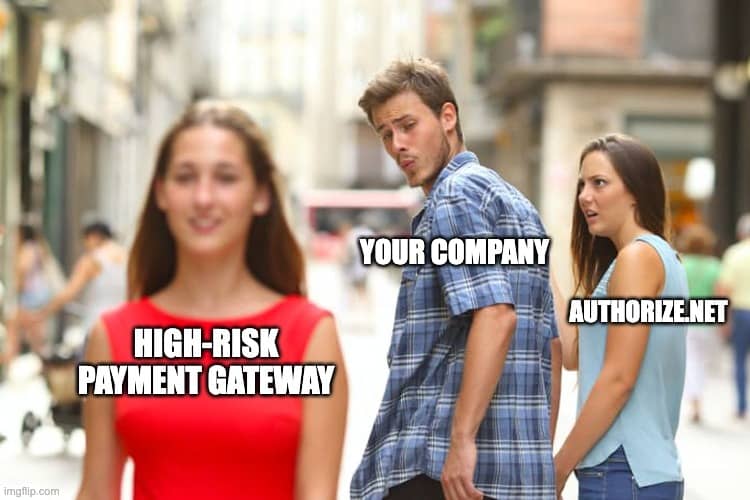ACH Reason Codes: Authorization Revoked by Customer R07

Authorization revoked by the customer is a common ACH (Automated Clearing House) reason code (R07) used to explain why an ACH transaction was rejected. The code indicates that the customer has denied authorization for the transaction to go through. This blog article will discuss the authorization revoked by the customer ACH reason code in detail. We will explore the standard R07 ACH reason codes, the reasons for authorization canceled by the customer, and how organizations can prevent authorization from being revoked by customer ACH reason codes. We will also discuss how to dispute authorization revoked by customer ACH transactions, the potential risks, best practices and possible solutions for authorization revoked by customer ACH transactions. Finally, we will provide resources to help organizations manage this.
Table of contents
- What is an authorization revoked by the customer reason code?
- What are the common ACH reason codes?
- What are the reasons for an authorization revoked by the customer?
- How can organizations prevent authorization from being revoked by customer ACH reason codes?
- How to dispute authorization revoked by customer ACH transactions?
- What are the potential risks of authorization being revoked by customer ACH reason codes?
- What are the best practices for authorization revoked by customer ACH transactions?
- What are the possible solutions for authorization revoked by customer ACH transactions?
- What resources are available to help organizations manage authorization revoked by customer ACH transactions?
- Conclusion
What is an authorization revoked by the customer reason code?
An authorization revoked by a customer reason code is an ACH reason code indicating that the customer has denied approval for the transaction. This code is usually used to explain why an ACH transaction was rejected. When this code is used, it indicates a customer’s refusal to allow the transaction to be processed. The customer may have refused to authorize the transaction for various reasons, such as lack of funds, fraud, or other security concerns.
The authorization revoked by customer ACH reason code is one of the most frequently used codes in ACH processing. It is a prevalent code often used to explain why an ACH transaction has declined. This code can be used in consumer and business transactions, although it is more commonly used in consumer-related transactions.
Want more information on how we can help your business thrive and integrate your payment processing with an ACH gateway? Contact us today, and learn more about what Zenti can offer you.
What are the common ACH reason codes?
The most common R07 ACH reason codes include:
- “R07 - Authorization Revoked by Customer” - This code is used when the customer has revoked their authorization for the transaction.
- “R08 - Unauthorized Debit” - This code is used when the customer has not authorized the transaction, and the transaction is not by the customer’s instructions.
- “R09 - Unauthorized Credit” - This code is used when the customer has not authorized the transaction, and the transaction is not in accordance with the customer’s instructions.
- “R10 - Invalid Bank Account” - This code is used when the customer has entered an invalid bank account number or routing number.
- “R11 - Invalid Bank Routing Number” - This code is used when the customer has entered an invalid bank routing number.
- “R12 - Invalid Account Number” - This code is used when the customer has entered an invalid account number.
- “R13 - Invalid Transaction” - This code is used when the customer has attempted to process an invalid transaction.
- “R14 - Duplicate Transaction” - This code is used when the customer has attempted to process a duplicate transaction.
What are the reasons for an authorization revoked by the customer?
The reasons for an authorization revoked by a customer ACH reason code can vary but typically fall into one of the following categories:
- The customer needs more funds in their account.
- The customer has become a fraud or identity theft victim and has revoked the authorization to protect themselves.
- The customer no longer does business with the company and has canceled the appointment.
- The customer needs to enter an incorrect bank routing number or account number.
- The customer has entered an invalid transaction.
- The customer has attempted to process a duplicate transaction.
- The customer has become aware of a security breach and revoked their authorization to protect themselves.
- The customer has become aware of a policy violation and has canceled the authorization.
How can organizations prevent authorization from being revoked by customer ACH reason codes?
Organizations can take steps to prevent authorization from being revoked by customer ACH reason codes by implementing the following best practices:
- Ensure that customers know the terms and conditions of the transaction and understand the risks associated with the transaction.
- Verify customer information and ensure that the bank routing and account numbers are correct.
- Use fraud prevention tools and analytics to monitor transactions and detect suspicious activity.
- Implement robust authentication measures to ensure that customers are who they say they are.
- Make sure that customers have the necessary funds in their accounts before processing the transaction.
- Monitor customer accounts for any suspicious activity or changes in spending habits.
- Educate customers on how to protect themselves from fraud and identity theft.
- Comply with all applicable laws and regulations.
How to dispute authorization revoked by customer ACH transactions?
Organizations can dispute authorization revoked by customer ACH transactions by following these steps:
- Contact the customer and ask them to provide proof that the authorization was revoked.
- Request a copy of the authorization revocation form from the customer and review it to determine if the revocation is valid.
- Contact the customer’s bank to determine if the authorization was revoked.
- Contact the ACH operator and request that they investigate the transaction.
- Gather documentation to support your case and submit it to the ACH operator.
- Wait for the ACH operator to investigate the transaction and respond to your dispute.
- If the ACH operator denies your dispute, you can appeal the decision.
What are the potential risks of authorization being revoked by customer ACH reason codes?
The potential risks of authorization revoked by customer ACH reason codes include:
- Loss of revenue due to declined transactions.
- Increase in customers’ risk of fraud and identity theft.
- Potential legal action from customers for unauthorized transactions.
- Damage to the company’s reputation.
- Increased costs to investigate and resolve disputes.
- Increased costs to process refunds.
- Increased costs to implement additional security measures.
- Potential fines and penalties from regulatory bodies.
What are the best practices for authorization revoked by customer ACH transactions?
Organizations should follow the best practices for authorization revoked by customer ACH transactions, including:
- Educate customers on the risks associated with ACH transactions and the importance of protecting their information.
- Implement robust authentication measures to ensure that customers are who they say they are.
- Make sure that customers have sufficient funds before processing the transaction.
- Monitor customer accounts for any suspicious activity or changes in spending habits.
- Verify customer information and ensure that the bank routing and account numbers are correct.
- Use fraud prevention tools and analytics to monitor transactions and detect suspicious activity.
- Comply with all applicable laws and regulations.
What are the possible solutions for authorization revoked by customer ACH transactions?
Possible solutions for authorization revoked by customer ACH transactions include:
- Implementing additional authentication measures.
- Verifying customer information before processing transactions.
- Making sure that customers are aware of the terms and conditions of the transaction.
- Using fraud prevention tools and analytics to detect suspicious activity.
- Educating customers on how to protect themselves from fraud and identity theft.
- Monitoring customer accounts for any changes in spending habits.
- Ensuring customers have the necessary funds in their account before processing the transaction.
- Complying with all applicable laws and regulations.
What resources are available to help organizations manage authorization revoked by customer ACH transactions?
There are several resources available to help organizations manage authorization revoked by customer ACH transactions, including:
- The ACH Network Rules and Regulations guide ACH transactions.
- The NACHA Risk Management Advisory Group provides advice and guidance on risk management.
- The Federal Reserve’s Electronic Payments Directory provides information on ACH transactions.
- The Federal Trade Commission’s Identity Theft Prevention Toolkit provides information on preventing identity theft.
- The Federal Financial Institutions Examination Council’s Financial Institution Letters provide guidance on best practices for ACH transactions.
- The ACH Payments Association’s website which provides information on ACH transactions.
- The US Department of Treasury’s website provides information on ACH transactions.
- The National Automated Clearing House Association’s website provides information on ACH transactions.
Conclusion
Authorization revoked by customer ACH reason codes can be confusing and difficult to understand. Still, organizations need to understand the risks associated with this code and how to prevent it from occurring. Organizations should make sure that customers are aware of the risks associated with the transaction and that they understand the terms and conditions. Organizations should also implement robust authentication measures and use fraud prevention tools to protect against fraud and identity theft. Finally, organizations should monitor customer accounts for any suspicious activity or changes in spending habits and ensure that customers have the necessary funds in their accounts before processing the transaction. By following these best practices, organizations can help prevent authorization from being revoked by customer ACH reason codes and ensure the safety of their customers.
Want more information on how we can help your business thrive and integrate your payment processing with an ACH gateway? Contact us today, and learn more about what Zenti can offer you.
Read Next

Find out whether Authorize.Net works for high risk merchants, what restrictions you might face and how to get approved.

Get expert advice on selling CBD products on Shopify, including compliance tips and setting up secure payment options.

Find out why Square may deactivate merchant accounts and steps to resolve issues and maintain uninterrupted payment services.
Need a High-Risk Merchant Account?
Disruption-free payment processing at the best price for your situation, guaranteed.
Get Free Guidance Now!